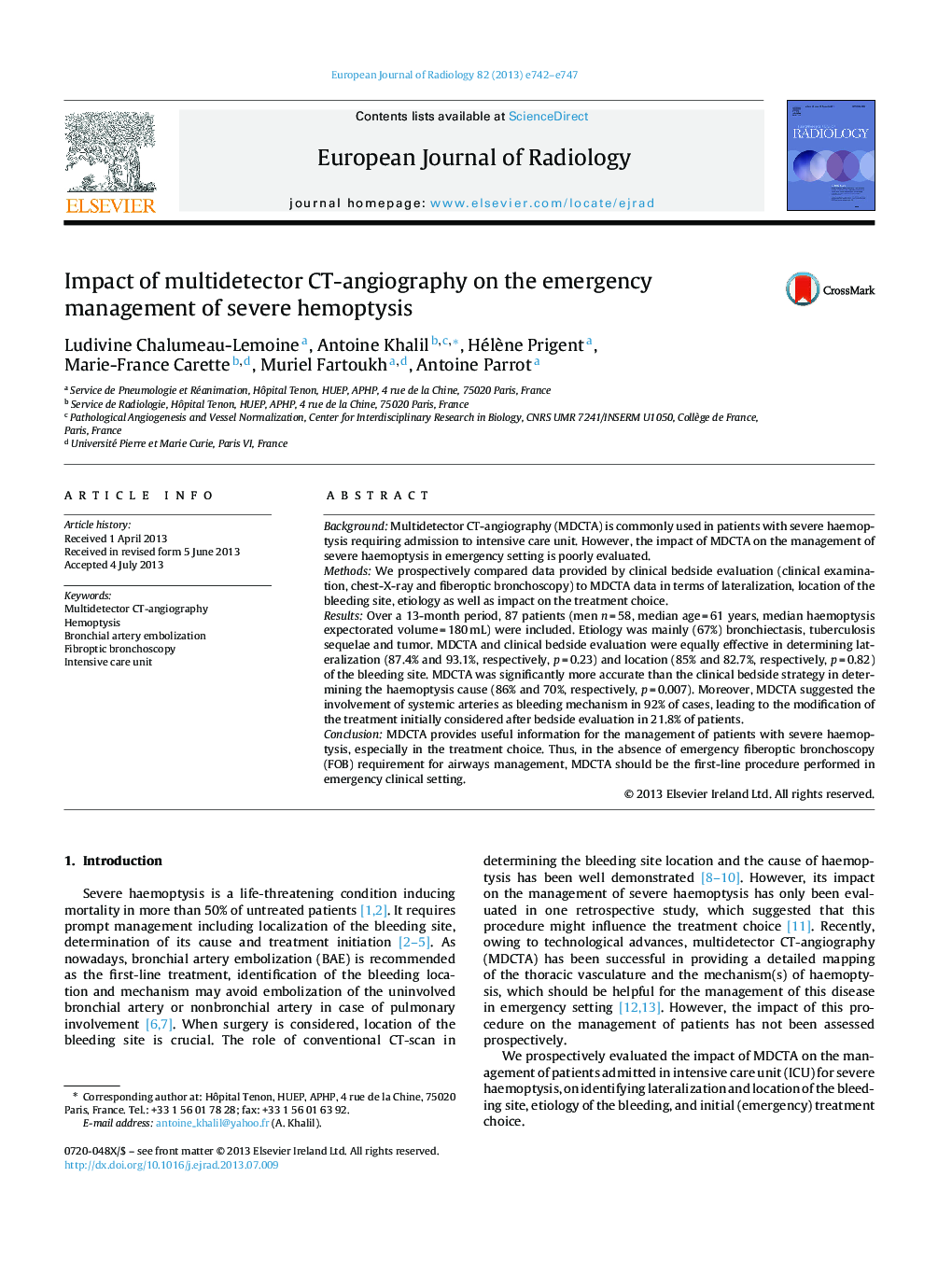| Article ID | Journal | Published Year | Pages | File Type |
|---|---|---|---|---|
| 4225676 | European Journal of Radiology | 2013 | 6 Pages |
BackgroundMultidetector CT-angiography (MDCTA) is commonly used in patients with severe haemoptysis requiring admission to intensive care unit. However, the impact of MDCTA on the management of severe haemoptysis in emergency setting is poorly evaluated.MethodsWe prospectively compared data provided by clinical bedside evaluation (clinical examination, chest-X-ray and fiberoptic bronchoscopy) to MDCTA data in terms of lateralization, location of the bleeding site, etiology as well as impact on the treatment choice.ResultsOver a 13-month period, 87 patients (men n = 58, median age = 61 years, median haemoptysis expectorated volume = 180 mL) were included. Etiology was mainly (67%) bronchiectasis, tuberculosis sequelae and tumor. MDCTA and clinical bedside evaluation were equally effective in determining lateralization (87.4% and 93.1%, respectively, p = 0.23) and location (85% and 82.7%, respectively, p = 0.82) of the bleeding site. MDCTA was significantly more accurate than the clinical bedside strategy in determining the haemoptysis cause (86% and 70%, respectively, p = 0.007). Moreover, MDCTA suggested the involvement of systemic arteries as bleeding mechanism in 92% of cases, leading to the modification of the treatment initially considered after bedside evaluation in 21.8% of patients.ConclusionMDCTA provides useful information for the management of patients with severe haemoptysis, especially in the treatment choice. Thus, in the absence of emergency fiberoptic bronchoscopy (FOB) requirement for airways management, MDCTA should be the first-line procedure performed in emergency clinical setting.
